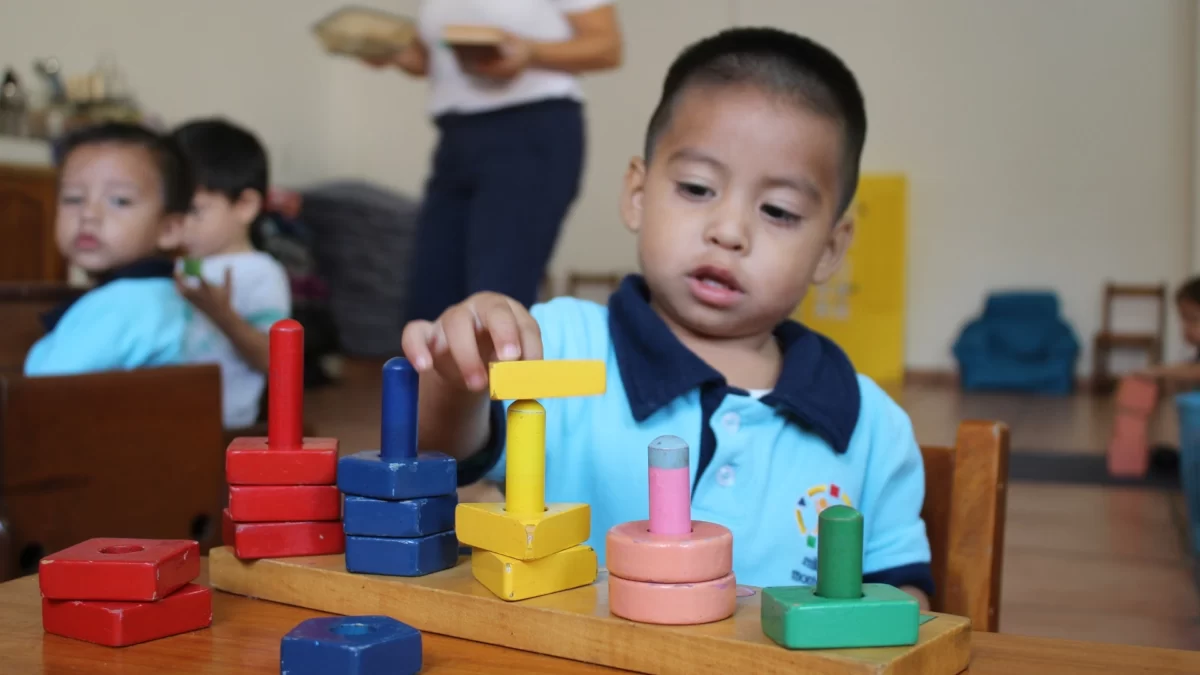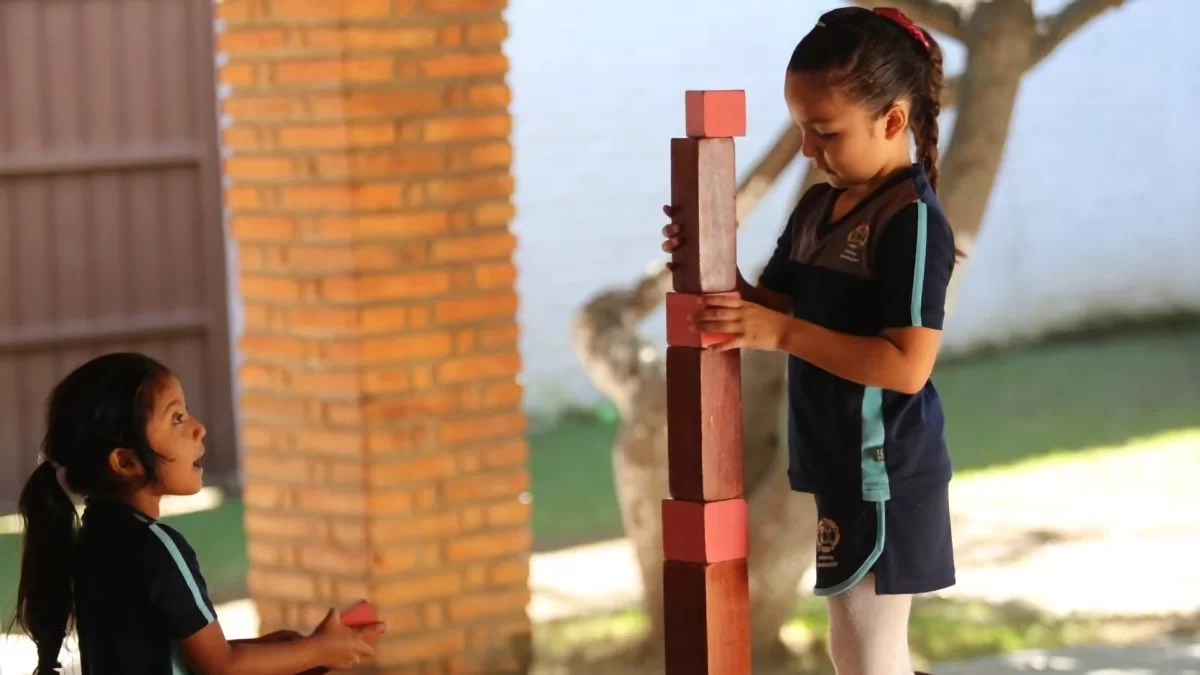Learn about the benefits of developing the sensory area and how to work with children following the Montessori Method.
In the Montessori method, education is divided into five areas of development: practical life, sensory, language arts, mathematics and culture. We will dedicate an exclusive post to talk about each one of them, this time we will focus on the sensory area.

The sensory area in the Montessori method is focused on the development and improvement of the senses, a training used to explore the world and learn about what surrounds them.
Through the stimulation of the senses, students manage to refine motor skills, develop coordination, perception, discrimination, the ability to order and classify. They internalize concepts, solid and geometric shapes, length, width, height, temperature, flavor, color and more.
Sensory area and the senses according to Montessori
From science, education and other scientific fields, the number of senses attributed to the human being varies from 5 to 32 and in some cases They simplify them into three large groups: mechanical, chemical and light. As advances in neuroscience and the functioning of our body and brain advance, it is even more difficult to classify them and delimit clear lines between one and the other.
However, it is possible to stimulate the perception of our body in relation to the environment. The materials that María Montessori designed, cover all the qualities that can be perceived by the senses, have not lost their validity and usefulness. As for the senses that stimulate, there are:
- Visual
- TactileAlthough the sense of touch extends throughout the skin, the materials and exercises focus on perception with the hands, particularly the tips of the fingers (which, by the way, is one of the areas with the most nerve endings in the body). human) allowing you to focus your attention on a part of your body.
- Auditory
- Olfactory
- Gustatory
- stereognostic, introduced by Dr. Montessori, this sense seeks to use the sense of touch by omitting the sense of sight.
- baric, which distinguishes the pressure or weight relationships.
- Thermal, perceives the temperature.
The senses are organs for "grasping" images of the outside world, necessary for intelligence, just as the hand is an organ for grasping material things necessary to the body.
Sensory materials in a Montessori environment
The intention of María Montessori was that children could form their conception of the physical world through their own experience, manipulating objects that help them to assimilate abstractions and differentiate the qualities of what surrounds them.
Following his philosophy, this knowledge should be presented to the child in a particular way, after thoroughly studying the work of the French physicians Itard and Seguin Added to his experience and observations, he created specific materials for the development of the sensory area.
The characteristics of these materials are designed to:
- Work with each of the senses separately and then together.
- They isolate a single quality to be worked on, favoring concentration.
- Thanks to its specific pattern that differs from practical life materials, the child is allowed to realize concepts that he already knows or can discover, refine and put a language on it. For example: heavy, light, smooth, rough, etc. It is known as “materialized abstractions”.
- have a bug check, which allows children to correct themselves.
- They are aesthetically pleasing to motivate exploration curiosity.
- They are limited, that is, in the classroom there is only one piece of each material to develop patience. Also the knowledge that is acquired with said specific material is finite, but it induces them to continue exploring under their own interest.

Some of the sensory area materials in a prepared environment: Colored boxes, cylinders with and without buttons, sound boxes, bells, binomial and trinomial cube, pink tower, geometry and botany cabinet, sensory decanomy, brown staircase, geometric solids, red ribbons, sandpaper boards , colored tablets, rough tablets, fabric boxes, thermal bags and tablets, geometric figures, flavor bottles, etc.
Exploration of the sensory area by age.
The need to know about the world that surrounds us begins from the womb and the need to explore from birth, that's why children's first three yearsthey cannot be left out. For this stage, the focus is on offering varied experiences that respond to their curiosity and the child's tendency to explore through his entire body.
Items with different colors, shapes, sizes, smells, tastes, weights, textures, or temperatures become part of the child's absorbing mind, which has unlimited potential and lays the foundation for thought processes.
If you want to learn more visit these postsyou:
Contribution of Montessori materials in education
Montessori upbringing and sensitive periods in children between 1 and 3 years of age.
How to stimulate the baby according to the Montessori method
Instead, for children from 3 to 6 years who is going through a period characterized by the refinement of his senses, the material responds to a natural interest to perceive reality in a concrete way, that is, by touching. At this stage, learning occurs unconsciously and involuntarily and this is precisely what leads the child to adapt to his environment.
Beyond stimulating the different sensory channels, the materials designed by Dr. Montessori offer the possibility of organizing information and favor cognitive development through self-correcting classification and serialization. All this is also achieved if we accompany it with free movement in a spacious, clean, bright and warm space. Along with natural elements such as plants.
The work with this area is fundamental, since it lays the foundations even for later learning related to other educational areas such as language, mathematics and culture, in which they will deepen. from 6 years onwards.
Do you dare to encourage your child to explore their senses?
